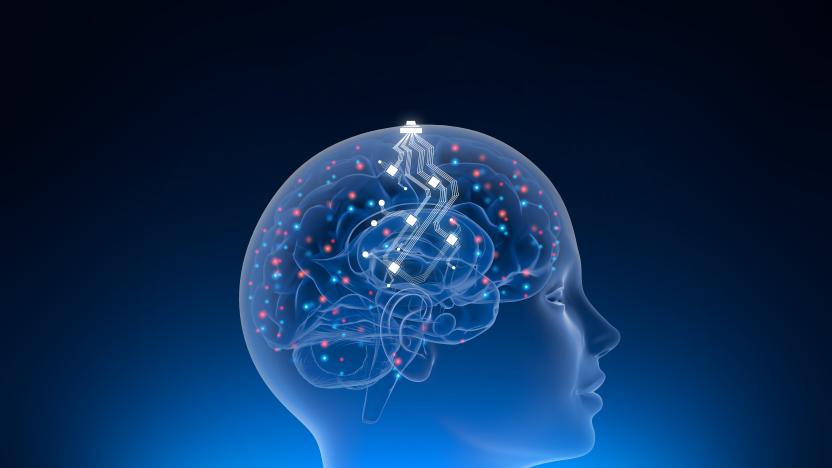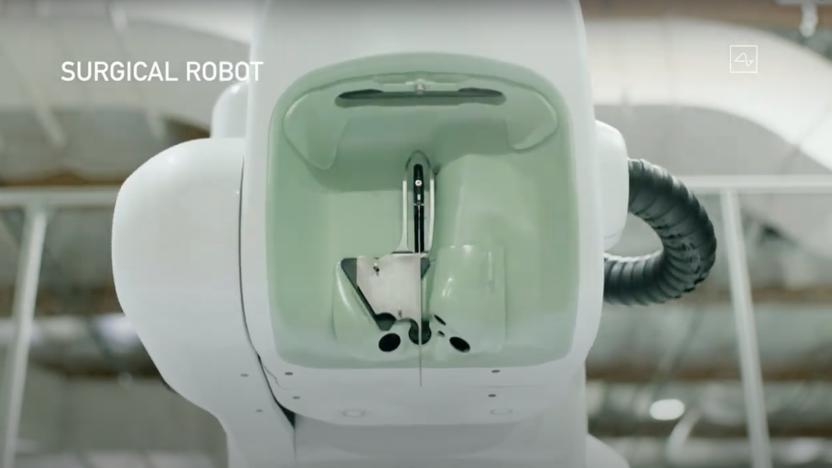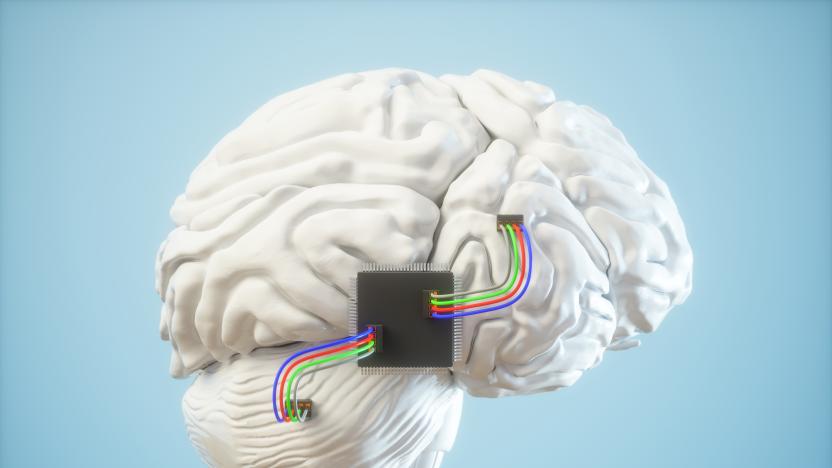brain-machine interface
Latest

Brain-machine interface helped a man with paralysis feed himself using robotic arms
Scientists have developed robotic arms that let people with paralysis feed themselves.

Co-founder of brain implant startup Neuralink leaves the company
Max Hodak has left Neuralink, the brain implant company he co-founded with Elon Musk.

Elon Musk unveils V2 of the Neuralink brain-machine interface surgery bot
Just over a year since their last major announcement, Elon Musk’s Neuralink is finally ready to show off the fruits of its labor: a revolutionary brain-machine interface that could blur the lines between humanity and technology, as well as give our feeble fleshy minds a leg up against increasingly capable AIs. "It’s important that Neuralink solves this problem sooner rather than later, because the point at which we have digital superintelligence, that’s when we pass the singularity and things become just very uncertain," Musk told Inverse in 2019. Musk took to the stage at the Neuralink headquarters on Friday afternoon to reveal a working “V2” prototype of the automated surgical system that the company debuted last year.

Watch Elon Musk's Neuralink reveal live at 6PM ET
Neuralink will apparently show off a working version of its brain-machine interface technology today.

Implant turns brain signals into synthesized speech
People with neurological conditions who lose the ability to speak can still send the brain signals used for speech (such as the lips, jaw and larynx), and UCSF researchers might just use that knowledge to bring voices back. They've crafted a brain machine interface that can turn those brain signals into mostly recognizable speech. Instead of trying to read thoughts, the machine learning technology picks up on individual nerve commands and translates those to a virtual vocal tract that approximates the intended output.

Rat controls vehicle with its brain, Pinky and The Brain apply for 'one last run'
So, let's paint the picture, shall we? There's a rat, a bundle of electrodes, more wiring than an electrician would know what to do with and some sort of wheeled apparatus. In the background stands a team of crazed Japanese scientists, intent on never sleeping again until said rat controls said vehicle entirely with his mind. Nah, it's not a re-run of a WB classic -- it's real life, and it's happening now in a dark, shadowy corner at the University of Tokyo. The RatCar is a newly developed rat-vehicle experiment that researchers hope will open new doors for those with mobility issues; we've seen brain-machine interfaces change the lives of the disabled before, but giving them the ability to control their wheelchair with their mind (for instance) would be taking things to an entirely new level. As of now, the team still has to figure out how to accurately determine how much movement is coming from the rat's feet and how much is coming from its mind, but there's no question that the research shows promise -- just don't let the humanoids learn of our findings, okay folks?

Honda's ASIMO could be thought controlled in Spaceballs 2
Sorry, that's not actually Dark Helmet, it's a researcher demonstrating the latest Brain Machine Interface (BMI) cooked up for robotics. While it's not looking too portable, it's a far nimbler setup than the original MRI Scanner first concocted by Honda to control robots in near real-time back in 2006. This time, Honda Research Institute in coordination with Advanced Telecommunications Research (ATR) and Shimadzu Corporation have achieved robotic thought control using a sensor cap to measure electrical potential on the scalp and cerebral blood flow. While we've seen much of this BMI tech applied to video games in the past, Honda claims its technology achieves the world's highest accuracy at 90% without special training. Impressive, even though it's clearly R&D work for now. Check the video after the break. [Via Akihabara News]

Researchers devise neural implant that learns over time
Brain-machine interfaces have done quite a bit in helping handicapped individuals interact with prosthetic limbs, computers and other humans, but a new neural implant concocted at the University of Florida could make all those past devices look archaic. Put simply, researchers have discovered a method that would enable brain-machine interfaces to "adapt to a person's behavior over time and use the knowledge to help complete a task more efficiently." Until now, the brain was the instrument doing all the talking while the computer simply accepted commands; with this method, "the computer could have a say in that conversation, too." In all seriousness, this type of learning mechanism could be game-changing in the world of physical therapy, but we hesitate to give something mechanical inside of our body too much free will, ya dig?[Via Physorg]



